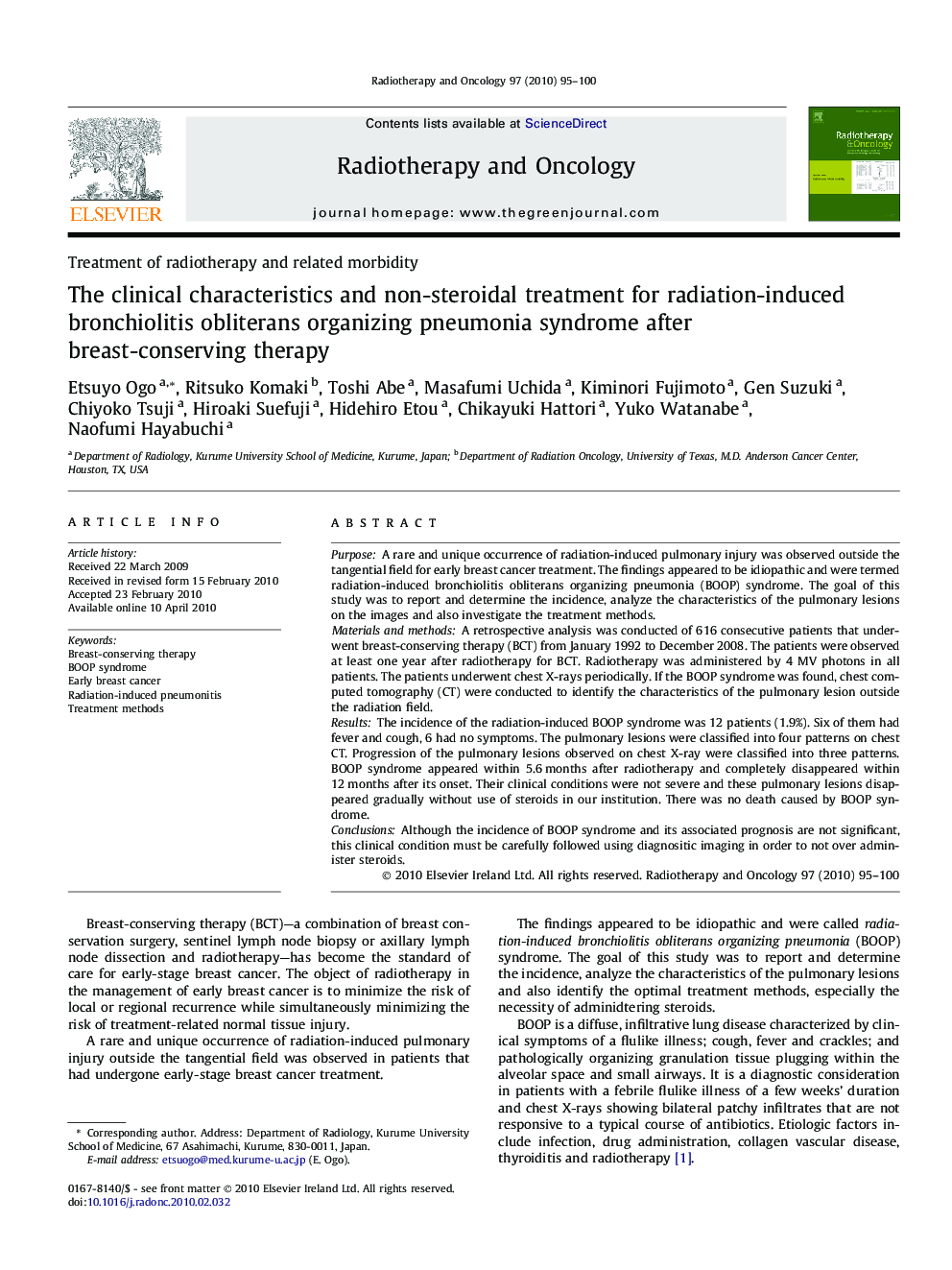| Article ID | Journal | Published Year | Pages | File Type |
|---|---|---|---|---|
| 2158642 | Radiotherapy and Oncology | 2010 | 6 Pages |
PurposeA rare and unique occurrence of radiation-induced pulmonary injury was observed outside the tangential field for early breast cancer treatment. The findings appeared to be idiopathic and were termed radiation-induced bronchiolitis obliterans organizing pneumonia (BOOP) syndrome. The goal of this study was to report and determine the incidence, analyze the characteristics of the pulmonary lesions on the images and also investigate the treatment methods.Materials and methodsA retrospective analysis was conducted of 616 consecutive patients that underwent breast-conserving therapy (BCT) from January 1992 to December 2008. The patients were observed at least one year after radiotherapy for BCT. Radiotherapy was administered by 4 MV photons in all patients. The patients underwent chest X-rays periodically. If the BOOP syndrome was found, chest computed tomography (CT) were conducted to identify the characteristics of the pulmonary lesion outside the radiation field.ResultsThe incidence of the radiation-induced BOOP syndrome was 12 patients (1.9%). Six of them had fever and cough, 6 had no symptoms. The pulmonary lesions were classified into four patterns on chest CT. Progression of the pulmonary lesions observed on chest X-ray were classified into three patterns. BOOP syndrome appeared within 5.6 months after radiotherapy and completely disappeared within 12 months after its onset. Their clinical conditions were not severe and these pulmonary lesions disappeared gradually without use of steroids in our institution. There was no death caused by BOOP syndrome.ConclusionsAlthough the incidence of BOOP syndrome and its associated prognosis are not significant, this clinical condition must be carefully followed using diagnositic imaging in order to not over administer steroids.
